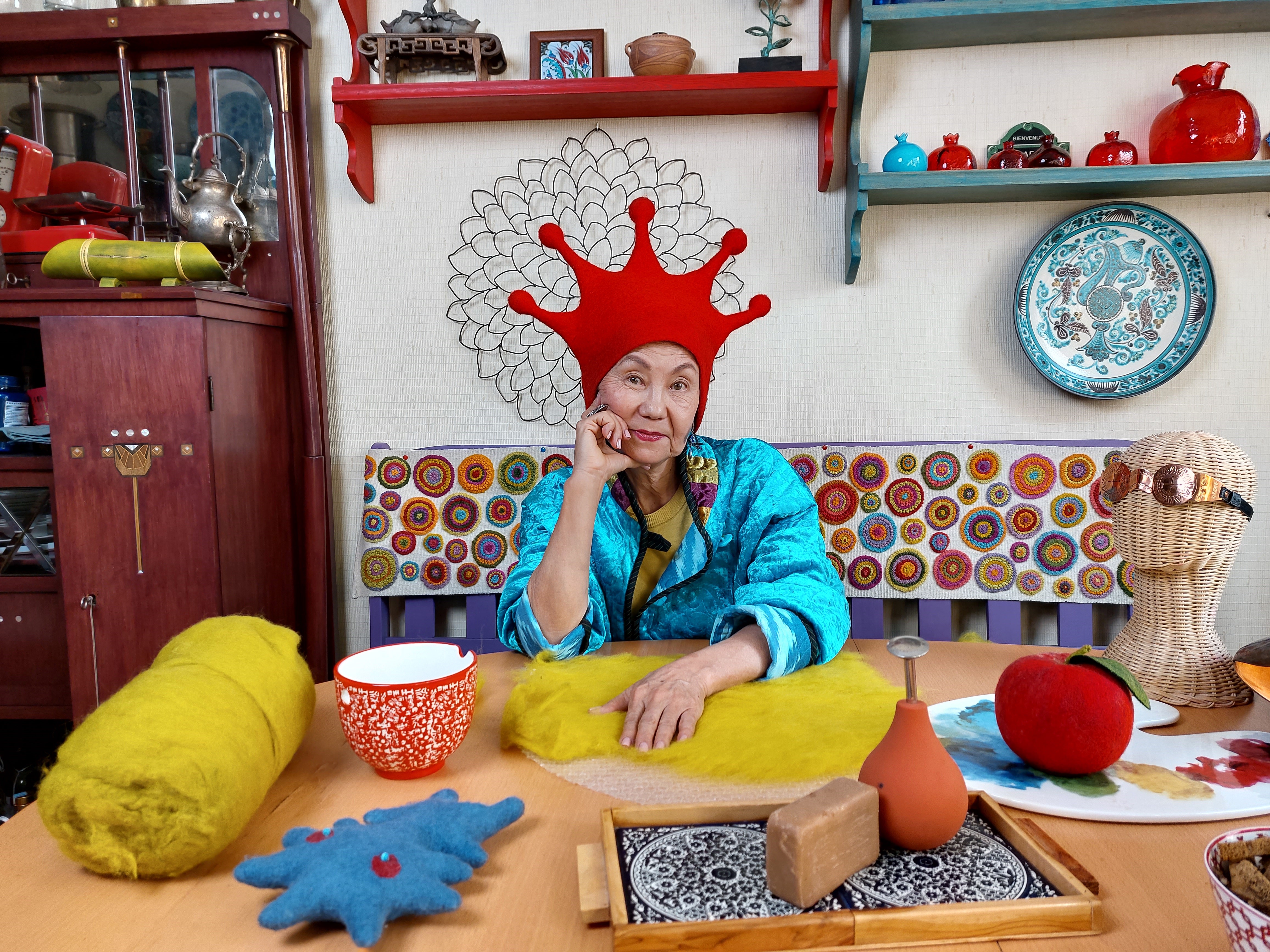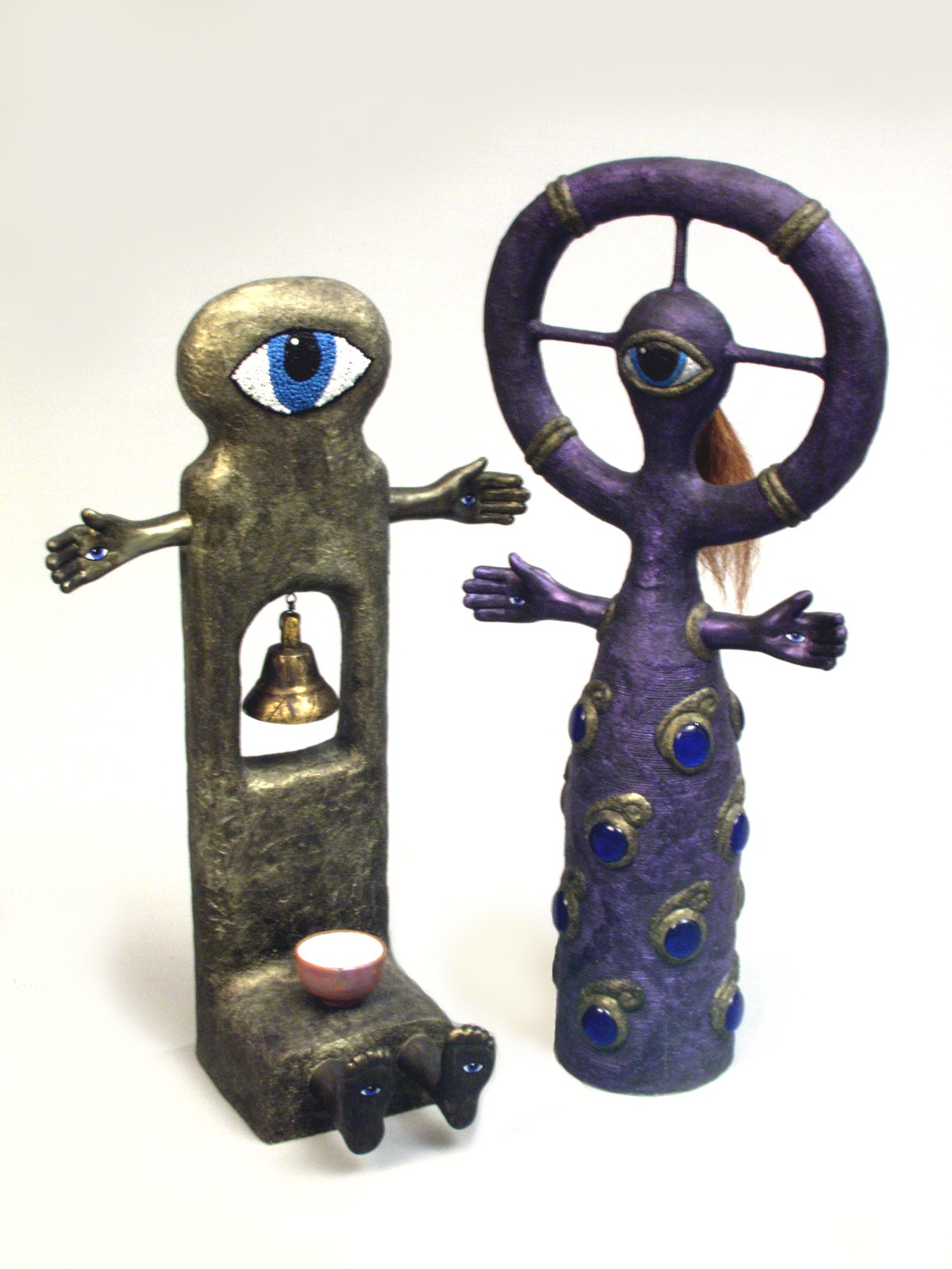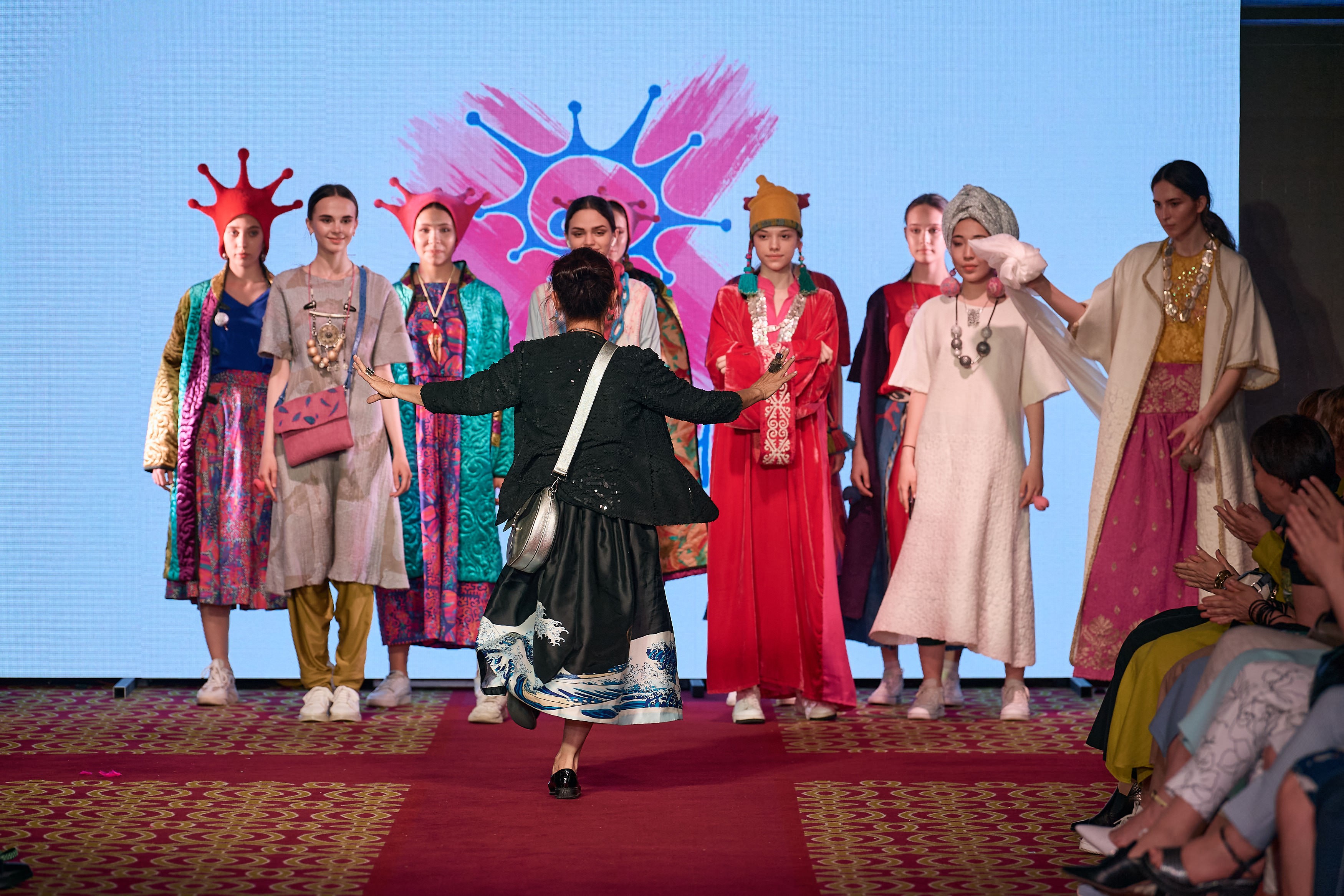
Aizhan Bekkulova, Chairman of the Union of Artisans of Kazakhstan, famous designer and felt artist
Qazaq Culture: Hello, Aizhan! Let's start by discussing the term "sheber in the context of Kazakh handicraft.
Aizhan Bekkulova: Hello! I am glad to be here and share our view of the world of handicrafts. Artisan in Kazakh translates as sheber - it's not just a word, but a proud metaphor. It contains a professional approach and great skill, which is the basis of any creativity. Unfortunately, it doesn't sound as proud now as it used to, but it's the basis of everything...! This is a serious sector of both the economy and cultural heritage. These are the best jewelers, wood carvers, potters, embroiderers and, of course, felt craftsmen. And all this is on a very serious level. You can have a colossal idea, but you don't have the skill. And the important thing here is how you will be able to reflect it.
Qazaq Culture: The Union of Artisans of Kazakhstan turned 12 years old. What are the goals and objectives of your union?
Aizhan Bekkulova: Yes, this is the first mush zhas.It is official, although there are other dates, there was another public foundation "Our Heritage", which had the same tasks and goals, but many craftsmen asked to change the name so that it would be more understandable and consonant with them. And the Union of Artisans of Kazakhstan appeared to promote the traditional forms of art of our people, where the responsibility for the future development of folk craft or art sounds loudly.

Qazaq Culture: You emphasize the importance of craftsmanship. How do you see the role of the master in the preservation and transmission of traditions? You also raise the issue of national design and its use in contemporary art. What challenges exist in this area?
Aizhan Bekkulova: A master is not just a person who knows how to do something with his own hands, but he is also an idea generator. Transform - on a very serious creative level. We always feel that our heritage is somewhere on the global cosmic level, and heritage cannot be approached one-sidedly. As a historical reference of some kind. It is necessary to study in many ways, different opinions and options. For example, the same ornament. This is not the decoration of a product, it is primarily the protection of a person, his home, he carries a protective function, a cultural code, a certain cosmos ... And it would be nice if people could read all this. Unfortunately, many symbols are lost. Not every one of us will be able to read them deeper. They do not understand the meaning of ornaments, their functional significance, because each type of craft has its own peculiarities in the ornament. We often see this on clothes. I recently saw on the web how a certain Kazakhstani designer "conquered" the podiums of Turkey. When I saw what she was making clothes out of, I wasn't interested. There was a flash of finished furniture fabric. They don't even try to be original in the national style. But our ancestors used ornaments, symbols on clothes, as well as in floor coverings, carpets, and flamethrowers. It is impossible to use such things, without knowledge, superficially, especially for Kazakh designers. It's a creative profession that educates its viewers and enlightens them. It is necessary to study this topic more deeply, the peculiarities of the Kazakh heritage. It is considered in our country, if you did not "stick" an ornament on your clothes, then it does not seem to be Kazakh national clothes. But if we turn to traditional national clothes, there does not necessarily have to be an ornament decoration. There are many types of clothes where there are no decorative items. Please note that quilted chapans or tones are very often used in museums. We have a very rich ornamental heritage in clothing, the same floral ornament, not large, this should be understood by modern designers working with national clothes. Visit museums more often, read specialized literature, historical articles. It's a big responsibility. Unfortunately, we do not have a single museum of decorative and applied arts, folk art, where you can exhibit a collection of national creativity.In particular, to get acquainted with the amazing variety of unique Kazakh ornaments.And we have something to show and be proud of.

Qazaq Culture: Tell us about the challenges faced by masters of traditional arts such as felt.
Aizhan Bekkulova: It must be admitted that, for example, there is great interest in felt all over the world. But mostly, these are modern technologies. A more traditional felt, which requires a lot of effort, group activity, the asara method - it is on the verge of extinction. And it must be admitted. It should be noted here that master craftsmen participate in the upcoming international competition from Kazakhstan in the nomination -kiiz basu- (participants are Central Asian countries, Turkey). Although it would be more correct to indicate that this is not a living heritage, but an art form that requires special treatment. We don't have many masters left who know this technique-kiiz basu. Who can dump a serious dense felt from which water will flow during bad weather (blizzard, rain, snow ...)? Who can make a real yurt covering...?
Yes, handwork has always been expensive, but yurt covering has never been cheap either. Depreciation occurred already in the Soviet period. When the work of real masters was not appreciated. This happened already in our lifetime. And artisans, "scheberlers" have always, at all times, been treated with reverence. Read the books of the great Abai, Mukhtar Auezov, descriptions of the scientist Alkey Margulan and others. The same wonderful traditions, when giving a girl in marriage, collected her dowry a year or more in advance, inviting craftsmen. And even then, not everyone knew the art of making high-quality felt. Maybe many people could embroider. But super embroidery was given to selected craftswomen. It was widespread- folk art, but not everyone could make the thinnest carpet, embroider, with an inner flair.
Qazaq Culture: What expectations do you have from events when you face the challenges of maintaining interest in these arts and their reproduction?
Aizhan Bekkulova: Unfortunately, those who own traditional national crafts are now over 70, which also indicates a serious threat. I will tell you one moment. Recently, one of the masters posted an amazing archival photo with beautiful Kazakh flamethrowers in our general chat. We all got up to remember how in childhood we used the asar method, did wonderful things, remembered. And then suddenly we had an idea why we should not hold such a mini-festival in the Kyzylorda region ourselves. (It so happened that most of the masters who sent these memoirs were Kyzylorda residents.) And we thought, while these masters are alive, we should go in April and work together. Make one or two flamethrowers using traditional techniques, remembering everything as it was. Restore this period. Let's go by ourselves, to the village, for 5 days, by train. I contacted Kyzylorda residents, many from different regions will come. We are not indifferent people, patriots, we cannot allow this kind of craft to remain forgotten. I really hope that there will be young people on the trip, who will record these important moments for cultural heritage, and the responsibility for the future of the craft will not disappear.
Qazaq Culture: Crafts Project.kz and its importance for the development of Kazakh folk art. Are you satisfied with the result?
Aizhan Bekkulova: We have the first online database of Kazakh folk art - Crafts.kz . We are glad that she is working with the support of the Eurasia Foundation. We always give a link to it, there are a lot of materials with available knowledge, useful articles, books, you can always find something valuable. There are very gorgeous, digitized -60 ornaments. You can definitely improve your educational level. Unfortunately, I often don't have enough time for everything, but I always try to publish the latest information whenever possible.
Qazaq Culture: There is a solid figure ahead in the activities of the World Craft Council. How do you plan to celebrate this anniversary, and what achievements in the development of handicrafts are especially dear to you?









